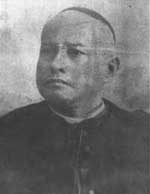|
|
| of Turtles and Men | |
|
Vicente Ll. Ramirez, Jr. Chair, Baao Historical Society Legend has it that early in the colonial era a Spaniard came to a fishing village by a lake and asked a local how the turtle, found abundantly in the area, was called. The quick answer was "Ba-o-o." Henceforth, the Spaniards referred to the village as "Bao." Over time the name evolved into "Baao." Whether the story is true or not, who knows? And, who cares? It's a cute little story with which we turtles, I mean, Baaoeños, can explain the origin of our town's name. Consider the towns and cities around the world; many trace their names to a legend. [Our sympathies go to John Steinbeck's Salinas, CA. Thanks for his 'mice,' though.] Self-styled critics of the town (oh, yes, we have an abundance of those, too) deride Baao of slow economic progress and blame it on what they claim to be a laid-back character of the townsfolk. They say it's because the name "Baao" is taken from the turtle, which moves about very slowly. For that reason they abhor the name and wish to change it with another, like "Barlin." Obviously, they forget that the persevering turtle beat the speedy hare in a running race. They forget that the smart turtle outwit the monkey into dropping it into its very habitat, the river. That the turtle is so emotional it weeps. That the turtle is so resourceful and ingenious it has its own impregnable armor, a built-in house, if you will. That the Triassic amphibian is so adaptable and resilient it has survived since 250,000,000 years ago - pre-dating the Jurassic period. Where have all the brawny dinosaurs gone? Patience. Perseverance. Wit. Passion. Sensitivity. Resourcefulness. Ingenuity. Adaptability. Resilience. These are the same traits characterizing the Baao persona we all should be proud of and grateful for. At first blush, the idea of replacing Baao with Barlin, is indeed very tempting. Who can go against honoring our dearly beloved Bishop Jorge Barlin? For over four centuries, almost until the very end of their colonial rule at the close of the 19th century, the Spanish friars lorded it over the islands and never could a Filipino secular clergyman as much as aspire to be a parish priest, much less a bishop (!) - until Jorge I. Barlin became one. From Baao.
Led by Gregorio Aglipay, a splinter group from the Catholic Clergy had formed a new congregation and cunningly tried to bring along with it properties of the Catholic Church. Had they succeeded, the 1Philippine Independent Church could be the dominant sect in the country today. Who eloquently argued in the courts against and repulsed the Aglipayans' obstinate attempt? Barlin. Of Baao. To lure the bishop into dropping the Church's fight against the annexation moves of the Aglipayans, Barlin was even offered the schismatic church's bishopric of Sorsogon. Msgr. Jorge's prompt and firm answer was a perfunctory, 2"Marhay pa 'kong maglampaso na sana sa tunay na simba'an," in a characteristic Baaoeño twang. That remark told much not only of the strong faith, but also of the humility, of the man. Inspired by the heroism of Rizal, our brother Filipinos' patriotism finally saw the dawning of a new nation at the end of the Philippine revolution. A new constitution had been written at the Malolos Congress in 1898, and in 1906 the First Philippine Assembly convened. In the rosy atmosphere of the new legislature's opening session, I could vividly picture a patrician-looking
|
|
|
|

|
